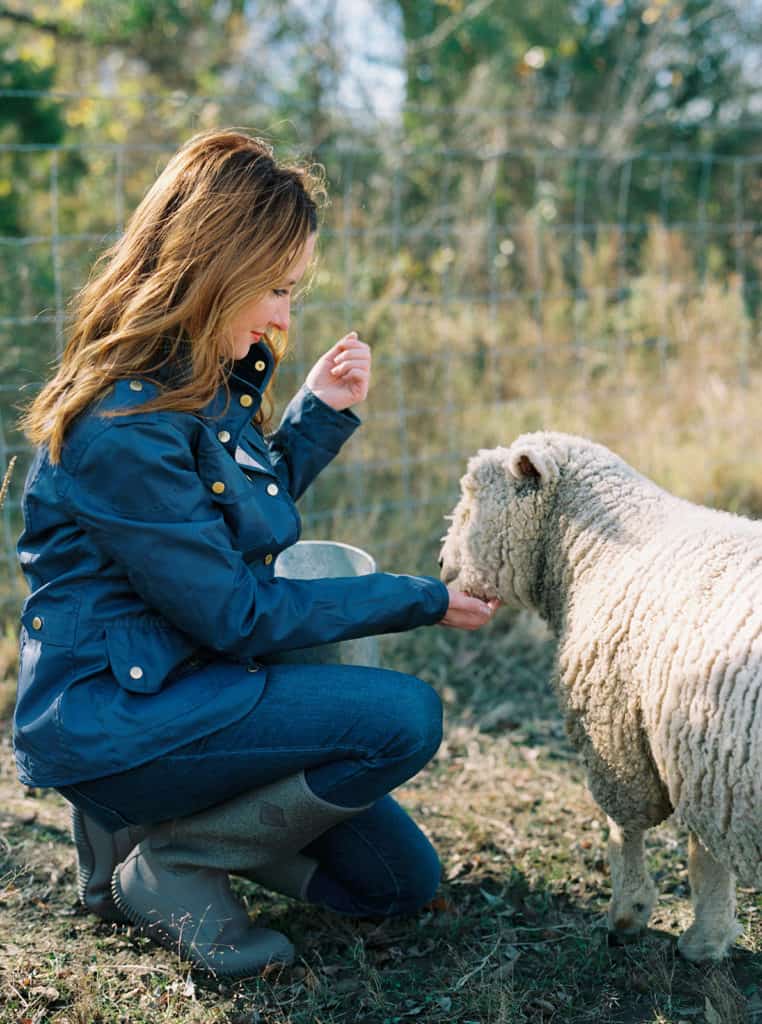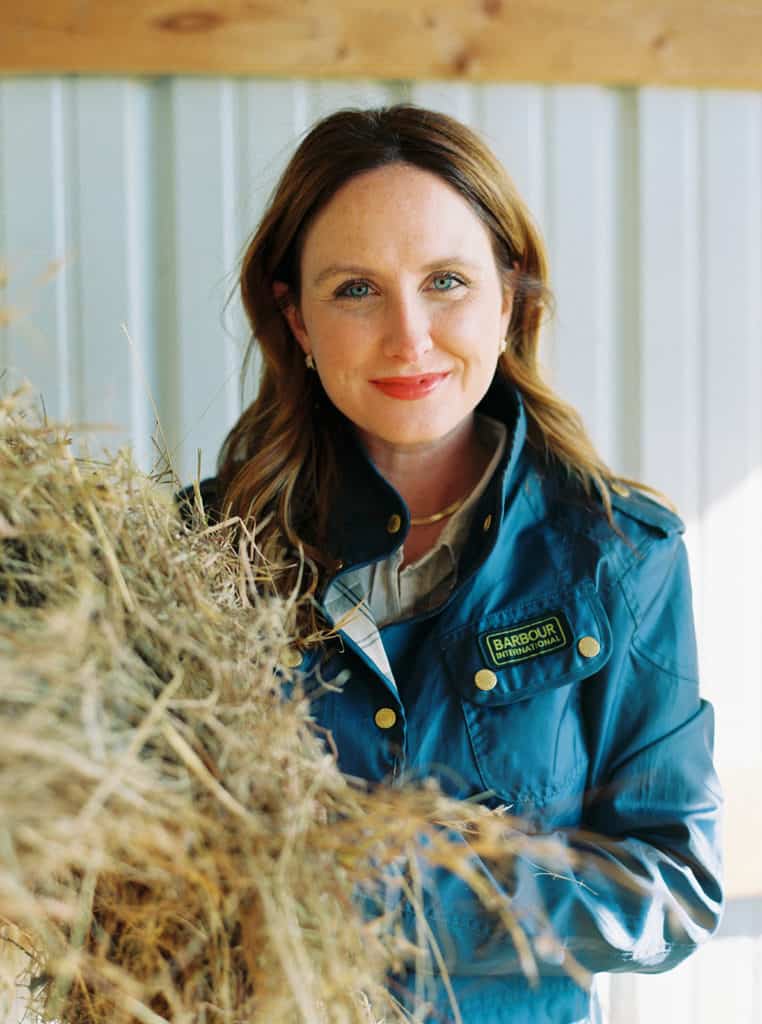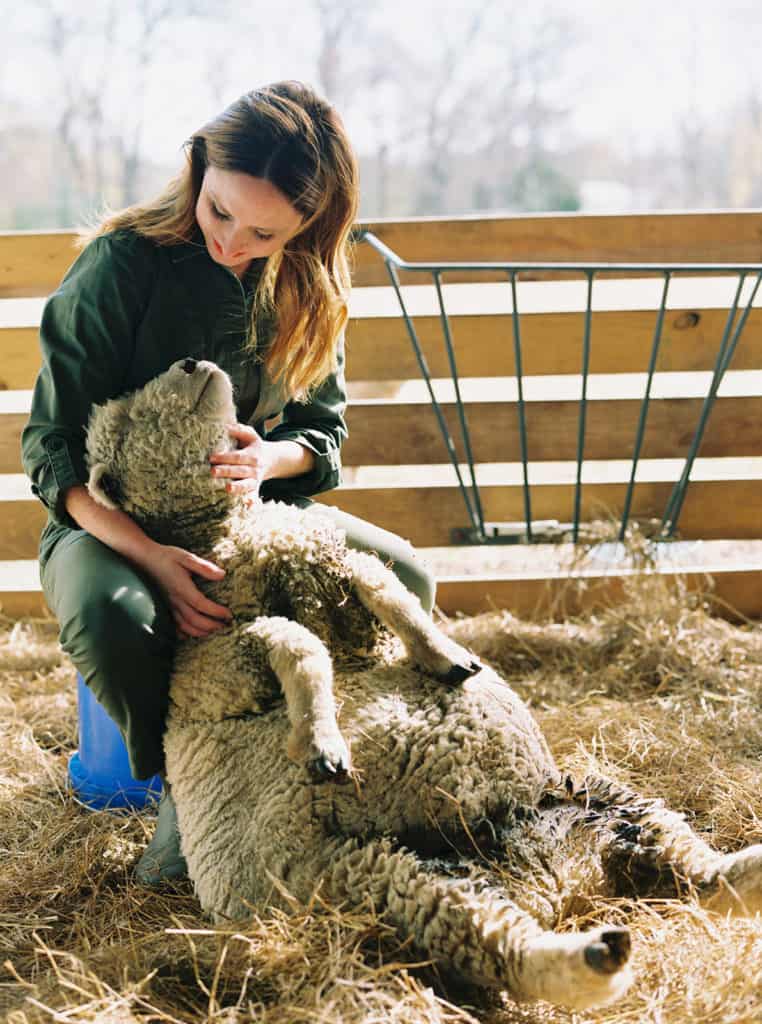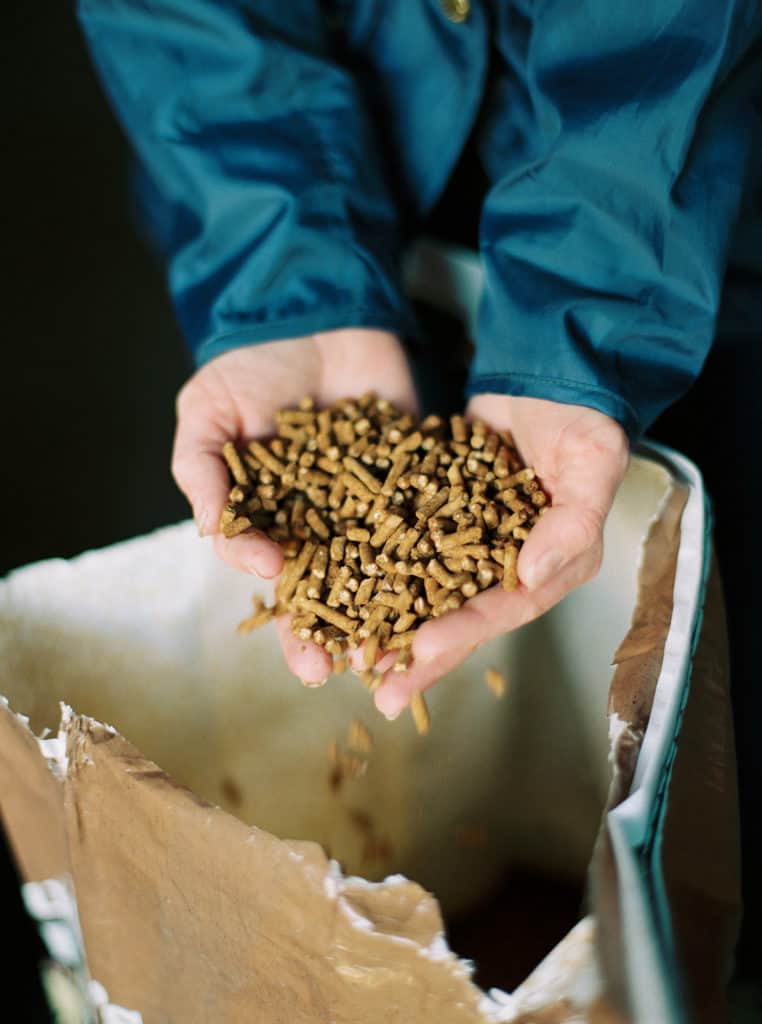Everything You Need to Know About Feeding Your Babydoll Sheep
One of the most common questions we receive is on feeding Babydoll Sheep, and what do they eat.
Feeding your Babydoll Sheep will be perhaps the easiest element of their care.
Babydolls are easy-keepers. As long as there is fresh grass to graze on or good-quality hay, some sheep-specific mineral and maybe the occasional grain for late-pregnant or lactating ewes, you are good to go!
In this blog post, we will discuss in more detail:
- Creating the Pasture from Scratch
- Taking Care of Your Sheep’s Diet with Pasture Maintenance
- Why You Need More than One Pasture for Your Sheep
- Good grass for sheep to graze on
- What qualifies as good quality hay
- The Best Mineral for Sheep
- Ways to best feed the Babydolls
- Common questions on feeding Babydoll Sheep
Before we dive in, please note that my opinions are just that—my opinions. What works for me and my sheep may not work well for yours. Deciding what to feed your sheep or what to have them graze on in the pasture is greatly determined by what kind of sheep you have, their use, your environment and goals for your property. There is not one right answer here.

Creating the pasture from scratch
More than likely, you will not have to do this. The pasture you have is fine and has good grass. However, some properties may require creating a pasture completely from scratch.
If you are creating your pasture, perhaps you are clearing trees to make a pasture or completely replace whatever is currently there, you will need to consider a few things.
Depending on how the land was used previously, it can take years for it to heal. If a lot of chemicals were used on the soil, you may want to wait some time before planting.
My sheep mentor told me it takes three years for land to heal.
You’ll know when the chemicals or whatever was abusing the land has washed away because wildlife will return to it.
During that waiting season, if a waiting season or two is necessary, check the soil’s ph. You may need to put lime down if it is acidic; making sure you do so 6-12 months before seeding any grass.
The best time to plant is late summer or early fall. You will know your pasture is ready to be grazed when it is difficult to pull a fully-formed plant from the ground because of it’s established root system.
Then, you are ready to welcome your Babydoll Sheep.
Take Care of Your Sheep’s Diet with Pasture Maintenance
Soil tests are the foundation to maintaining a good pasture. Soil tests should be done about every three years.
What you are looking for in these soil tests is the soil acidity. That can throw off the nutritional value of your pasture’s grasses.
If it’s too acidic, you can add lime. Not enough, add fertilizer.
Note: Some new shepherds will go organic on fertilizer, which is great, but they will have their chickens or pigs go through the pasture as a ‘natural’ fertilizer. They have the right idea, but chicken and pig manure can increase the copper toxicity. Sheep are highly, deathly sensitive to copper.
Instead, I suggest having another ruminant such as goats, donkeys or horses (cows work too, but tend to tear up the pasture too much), to provide that natural fertilizer. And, they will help cut down on parasites in the pasture as well!
You Must Have More Than One Pasture for Your Sheep
Every shepherd’s situation is going to be different when it comes to pasture rotation. Some will rotate every few days with intensive grazing, some every few months with rotational grazing.
The common denominator is that pastures need a rest, time for the plants to grow again before being eaten down. Therefore, you will need more than one pasture for your sheep.
For our small flock, we watch the pastures to decide when to switch them over; but on average, it’s about 2-3 months during our growing season.
What grass is best for Babydoll Sheep to graze?
Any pasture with good, healthy grass will suffice for a small flock of Babydoll Sheep.
Our pasture and paddock has fescue which works perfectly for us. It’s good for the sheep to graze on, and it is the most desirable for hay in the winter.
Most likely, the grass in your pasture is perfectly fine for your sheep and you do not need to do any Pasture Establishment or Pasture Renovation.
However, it’s good to know what options you have.
When considering pasture and hay forage crops for your sheep, there are four categories of plants to consider:
- Legumes
- Cool Season Grasses
- Warm Season Grasses
- Annual Forages
Legumes for a sheep pasture or hay include alfalfa and various types of clover.
Note: Sheep bloat very easily and due to the high leaf-protein (saponins) content in the legumes. Therefore, I limit how much I feed legume plants to my sheep.
Typically, I will start offering small amounts of alfalfa hay to pregnant ewes late in the pregnancy and shortly after birth.
Then, we will switch from the alfalfa to let the lactating ewes into our small clover patch to graze.
If I am unavailable to let them in and out of the clover patch, I may give a small portion of alfalfa hay to them in the evening as supplement.
Cool season grasses are divided into two categories of sod formers and bunch grasses.
Sod-forming grasses include bluegrass, bromegrass and canarygrass.
Bunch grasses include orchardgrasses, timothy, fescue and ryegrass.
I have heard from other shepherds that orchardgrasses are the best for sheep to graze on. However, as with all of these options, you need to consider your area’s growing season, conditions and your own needs for your sheep.
For example, orchardgrasses are not very winter-hardy, so my Babydoll Sheep friends in colder areas of Canada may not see it as their best option.
Warm season grasses include switchgrass, crabgrass, bermuda, and Indiangrass. These grasses are not recommended in cooler climates, obviously, but even in Oklahoma, I still prefer a cool season grass like timothy or fescue.
Annual forages include brassicas like kale (rationed as too much kale can be toxic), turnip, rape. These plants extend the grazing season deeper into the fall. We do not plant annual forages as it is more cost and time effective for our lifestyle to go ahead and start giving hay.
A few things will determine your choice in these options: Your environment, hardiness zone, frequency in which the sheep graze or consume the hay product, and, what is most cost-effective, and time-effective, for you.
If you need to sow grass, establish or renew your pasture, and do keep in mind that you may not need to; but, if you do, take time to do your research and perhaps, even reach out to your local extension office for help.

What Is Good Quality Hay?
Good quality hay is dry, not molded or rotten, and full of the same good-quality grasses as mentioned above.
We bale our own hay, and will sometimes bale hay at a neighbor’s property. They get a free mowing, and we get more winter food for our animals!
The Best Mineral for Sheep
Sheep must have mineral to complete their diet.
When shopping for a sheep mineral, you must be sure the label says that the mineral is specific to sheep.
As mentioned before, sheep are very sensitive, deathly so, to copper. Copper is in goat mineral, and oftentimes people will assume their sheep can have it too. Be sure it says, “for sheep” before offering it to your sheep.
Mineral comes in block or granular form. Granular is better, easier for the sheep in my opinion, but often, hard to find. Therefore, I sometimes buy the block and once they get started on it, I’ll crumble it down for them.
Feeding Babydoll Sheep Daily
During the warmer months, our sheep graze the pasture and take the offered mineral. That is all. We do not give them hay, grain or any other supplement.
During the cooler months, we keep the mineral and once the pasture has died back, we offer hay.
For ewes in the last weeks of pregnancy and while lactating, we give them some grain and a little alfalfa or let them graze the clover for a bit.
Here are a few things to consider when deciding how you plan to feed your sheep:
Monitoring Grazing
Some shepherds only let their sheep out to graze during the day, then put them up away from food at night. Some shepherds have the sheep out all day every day.
Unless we have lambs, in which case we put everyone in the shed every evening for extra predator protection, our sheep stay out all the time.
We have never had an issue with bloat, and my flock does not endlessly graze. Some shepherds really struggle with bloat and have to monitor grazing, but we do not.
If you have a lot of legumes in your pasture, your flock may be more susceptible to bloat and you may want to consider monitoring their grazing more closely.
Keep the Hay Off the Ground
If you have done any research for taking care of your Babydoll Sheep, you may have seen the various hay feeder options. Do not bypass this expense. Get a proper hay feeder for your sheep to keep the hay off the ground especially if you keep them in their shed.
You can see in the picture below, we have ours attached to the inside of our sheep shed.
Sometimes, we will get a dry spell and it is easier to put a large hay round bale in the pasture. Our sheep usually eat at shoulder level and above. We then use the hay that’s been on the ground as a layer of bedding.
Click here to learn more about bedding and maintaining your sheep shed or barn’s bedding.

Feeding Babydoll Sheep Grain Only to Pregnant/Lactating Ewes, Or, as a Bonding Tool
As mentioned before, feeding Babydoll Sheep grains should be occasional. Too much can cause bloat, and in some cases urine crystals for rams.
However, when our families first pick up their lambs, it can take some time for the lambs to warm up to their new home. I will have already introduced them to being hand-fed grains, again just the tiniest handful, to warm them up to people.
I tell our lamb families to sit in their shed or in a highly trafficked area of the pasture next to some grain in a bowl feeder first and let the sheep come to them. Then the next day move it a little closer and closer until it’s in your hand.
Once they warm up to the family, do the same thing, but alternate having and not having the grain because the goal is to get rid of the grain and have the sheep choose to trust you.
Common Questions About Feeding Babydoll Sheep
How Much Hay do You Feed Babydoll Sheep?
Because my sheep do not tend to overgraze or overeat hay, we keep the hay feeder full or a large round bale in the pasture.
However, for sheep that need rationing, about one flake of hay a day. You can give have a flake in the morning and half in the evening. That is approximately 4lbs of hay a day.

How Much Grain do Your Feed Babydoll Sheep?
Grain is a treat given occasionally, usually fed from hand.
However, during the late weeks of an ewe’s pregnancy or lactating time, I offer about half a pound of grain. I measured it out per the feed bag’s recommendation and found a scooper that fits the measurement perfectly making it much easier to feed.
Will Sheep Eat Poisonous Plants?
Anything that is not grass, hay, mineral or grain I would keep away from sheep. However, I have noticed that most animals stay away from what is poisonous to them.
For example, I didn’t realize mint was poisonous to sheep and offered a sprig to our ram once. He sniffed it, huffed and walked away.
I think it’s important to know what is poisonous or toxic to your animals and do your due diligence, but I also think, apart from the occasional unfortunate situation or if a sheep is desperately hungry, most animals steer clear of poisonous plants.
What Plants are Poisonous to Sheep?
Here is a list of a few common plants you’d see in a garden or pasture that are poisonous to sheep:
- Azaleas
- Acorns / Oaks
- Boxwood
- Clematis
- Garden Iris
- Morning Glory
- Rhubarb
- Kale
- English Ivy
- Oleander
- Poppies
- Tulips
- Delphinium
- Foxglove
- Lupin
- Ferns
- Holly
These just a few poisonous plants to sheep. My suggestion is to always Google a plant before planting it anywhere near the sheep pasture, shed, barn, paddocks or any places they would walk by or could get loose.
Feeding Babydoll Sheep is Simple
Feeding your sheep is simple. Give them good pasture and hay, mineral and the occasional grain. Don’t get too caught up in the weeds, pun intended, with all of the different grasses or being afraid of the poisonous plants.
Do your due diligence, be aware of any changes in the pasture or changes in the sheep, be observant and pro-active and you will do great!
Affiliate Disclosure & Content Disclaimer
This post may contain affiliate links from a sponsor, Amazon Affiliates or other program. If you use these links to buy something we may earn a commission at no extra cost to you. This allows me to continue creating more content that you love. The content of this article is for general information purposes only. My goal is to provide you with the best information possible from my personal experiences for you to make the best decisions on the given topics for yourself.
Photographs by Leah Payne